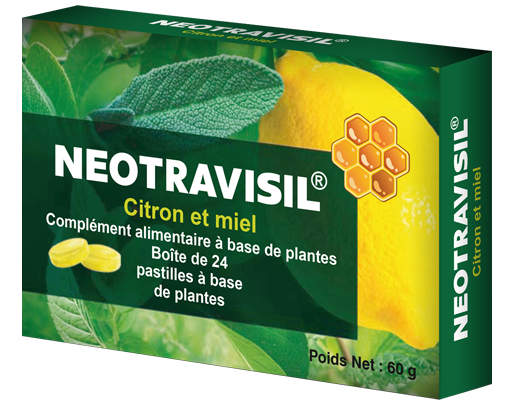There are several classifications of cough according to different parameters:
- Unproductive, or dry;
- Productive, or wet - with sputum discharge.
With the flow:
- Acute - up to 3 weeks;
- Protracted - 3-6 weeks,
- But less than 3 months;
- Chronic - over 3 months.
By the time of appearance during the day:
- Morning,
- Day,
- Evening,
- Night.
- Short,
- Barking,
- Husky,
- Soundless.
By intensity:
- Coughing;
- Severe paroxysmal cough;
- A series of cough shocks.
By Duration:
- Episodic short-term;
- Paroxysmal;
- Constant.

All these indicators are important for diagnosis, treatment prescription and, possibly, further examinations. The first questions that doctors usually ask patients with a cough usually relate to its nature - "is the cough dry or wet?", "Does sputum go away?", Since the answers to them, especially in acute respiratory diseases, can help the doctor understand further treatment tactics.
With a dry cough, expectoration does not occur.
With a dry cough, sputum does not pass (therefore it is also called unproductive), because it has a thicker and more viscous consistency than a wet cough. A dry cough is obsessive and tiring, and there is no relief when coughing. With laryngitis (inflammation of the mucous membranes of the larynx) and tracheitis (inflammation of the mucous membrane of the trachea), dry cough often has a barking character, and is combined with a sore throat. At the very beginning of the development of bronchitis (inflammation of the mucous membranes of the bronchi) and pneumonia (inflammation of the lungs), the cough can also be dry, but in these diseases it is more a cough with scanty sputum than absolutely unproductive.
A wet cough leads to profuse secretion of phlegm from the lungs and bronchi. This cough is also called productive.
By itself, a cough with sputum production is not dangerous, it is part of the physiological mechanism for cleansing the respiratory tract from any dangerous irritating agents - dirt, dust, allergens, bacteria. These substances accumulate in the mucus covering the inner walls of the respiratory tract, its production and excretion, if necessary, increase, which leads to an increase in the amount of sputum secreted. A wet cough usually occurs as mucus accumulates in the bronchi, and in case of serious pathologies, also pus, blood, fluid, and stops after coughing up.
The nature of the sputum discharge is of great diagnostic value. So, for example, at the initial stages of tracheitis and acute bronchitis, sputum can be mucous, viscous and vitreous, later it becomes mucopurulent. In different types of acute pneumonia, the sputum has a different character: for example, mucopurulent sputum is separated in focal pneumonia, and in lobar pneumonia, rusty sputum4.
In acute respiratory infections, the cough usually has a certain "development cycle": at first it is dry, and then turns into a wet one, which becomes more superficial and disappears as it coughs up and over time.
A moist or productive cough leads to profuse mucus from the lungs and bronchi.
Acute dry cough is characteristic of acute respiratory viral infections and inflammatory processes in the larynx (laryngitis), trachea (tracheitis), bronchi (bronchitis) and lungs (pneumonia). When diagnosing such an acute cough, it is important to make sure that it is really associated with an infection - in this case, it will most likely be accompanied by an increase in temperature, as well as a runny nose, sore throat and poor health. The most important task in this case is to exclude the possibility of pneumonia (pneumonia).
Acute wet cough is observed with bronchitis, the cough ends with sputum discharge and reappears when it accumulates. With a strong accumulation of phlegm in the lungs, wheezing can be heard. With pneumonia, the cough is usually moist from the first hours of the illness, it is often described as deep.
A lingering cough (more than 2-3 weeks) is often observed after acute bronchitis. It is associated with increased sputum formation after an infection and, often, with an increased sensitivity of cough receptors.
A prolonged dry cough is possible with tracheitis or tracheobronchitis as a result of infection with certain respiratory viral infections (RS, rhinos, parainfluenza viruses). Such a cough is often painful, paroxysmal, the attack ends with the discharge of a lump of dense mucus.
Spasmodic cough is a debilitating dry cough in the form of attacks, it is characteristic of bronchial asthma.
A prolonged, persistent dry cough is observed in chronic respiratory diseases and diseases of other organs, often of a non-infectious nature (tumor diseases of the respiratory system, gastroesophageal reflux (backward reflux of food from the stomach into the esophagus), heart failure, etc.).
A persistent wet cough is observed in most suppurative lung diseases, accompanied by an accumulation of sputum. In smokers, such a cough is caused by chronic inflammation of the upper respiratory tract and is usually observed in the morning, it is caused by the accumulation of phlegm during the night and difficult expectoration, it is also called “smoker's cough”.
A specific nocturnal cough is a feature of bronchial asthma, it usually occurs closer to the morning due to increased bronchospasm; he often indicates an allergy to the feather in the pillow. Nocturnal cough is also observed with gastroesophageal reflux.
But it is worth saying that one cannot draw conclusions and make a diagnosis only on the basis of the color of the sputum or the nature of the cough. It is dangerous to procrastinate in any case, so timely consultation with a doctor is essential. Lack of proper treatment can mean that complications may appear in the near future.
References
1. Radzig E. Yu. Cough is a protective mechanism and symptom of respiratory tract infections. Pediatrics, 88, No. 5, pp. 112-116, 2009.
2. Volkov A. V. Cough. Antitussive drugs. Russian medical journal, No. 5, p. 368, 2009.
3. Chikina S. Yu. Cough: basic principles of diagnosis and treatment. General Medicine, No. 3, pp. 30-34, 2010.
4. Butov MA Propedeutics of internal diseases: a textbook. - 2nd ed. - M .: Neopolit, 2017.
5. Borodulin V.I., Topolyansky A.I. Handbook of a practical doctor in 2 volumes. M .: Onyx: Peace and Education, 2007.






